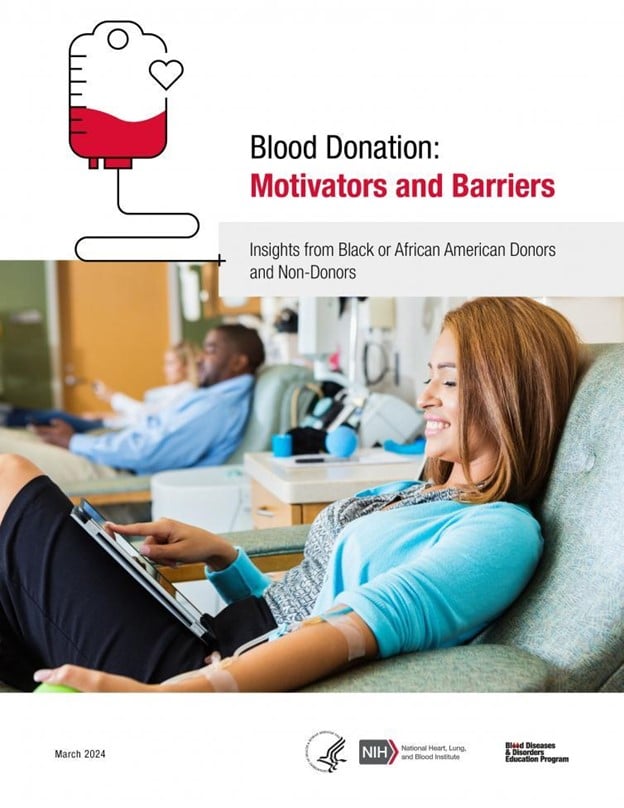The motivations and barriers of black blood donors have been explored in a report from the National Institutes of Health’s (NIH) National Heart, Lung, and Blood Institute (NHLBI). The resource titled, “Blood Donation: Motivators and Barriers — Insights from Black or African American Donors and Non-Donors Report” explains that, “NHLBI’s Blood Diseases & Disorders Education Program conducted qualitative research on these topics. Initial conversations with blood donation subject matter experts (SMEs) identified Black or African American adults as an important audience for the focus of the research because of lower blood donation rates from this community. The SMEs suggested exploring the systemic and historical racism that has eroded trust in the medical system, including the racial segregation of blood donors and blood recipients. Additionally, common entry points for blood donations, such as college and workplace blood drives, have resulted in greater representation from white individuals and less representation from communities of color.”
The report’s findings on the motivations and barriers of black blood donors are based on research from 12 focus groups, “conducted with Black or African American adults ages 18 to 50 for a total of 67 participants. Participants were segmented based on age and blood donation experience. Those with previous blood donation experience are referred to as Donor Experimenters, and those without blood donation experience are referred to as Susceptible Non-Donors. All participants expressed an interest in donating blood in the future.”
Key insights on the motivations and barriers of black blood donors included:
- nearly all participants had been exposed to health information on social media, but most were not likely to trust that information. However, younger participants were more likely to seek health information, including information about blood donation, on social media;
- [m]ost previous blood donors did not donate again because the process took place at an inconvenient time or location, but participants stated they would be motivated to donate if donating blood was made more convenient for them, for example, located in their neighborhoods at less traditional locations, such as malls, community centers, barbershops, and salons;
- [t]he younger audience was more likely to outwardly recognize systemic barriers within the Black or African American community, such as mistrust of the medical system. The younger age group with blood donation experience was more likely to recognize word-of-mouth medical conspiracy theories shared by older generations;
- [m]ost participants did not regularly think about blood donation but expressed motivation when encountering a personal reason for donating, such as to help a friend, family, or a community member in need; [and]
- [p]articipants wanted messaging and materials to address barriers.”
The report on the motivations and barriers of black blood donors also highlighted that, “[u]nderstanding someone’s blood donation knowledge, attitudes, and perceptions is critical to increasing and diversifying the blood supply in the U. S.”
Diversifying the blood donor base is a focus of the America’s Blood Centers Advocacy Agenda. Find more information here.

